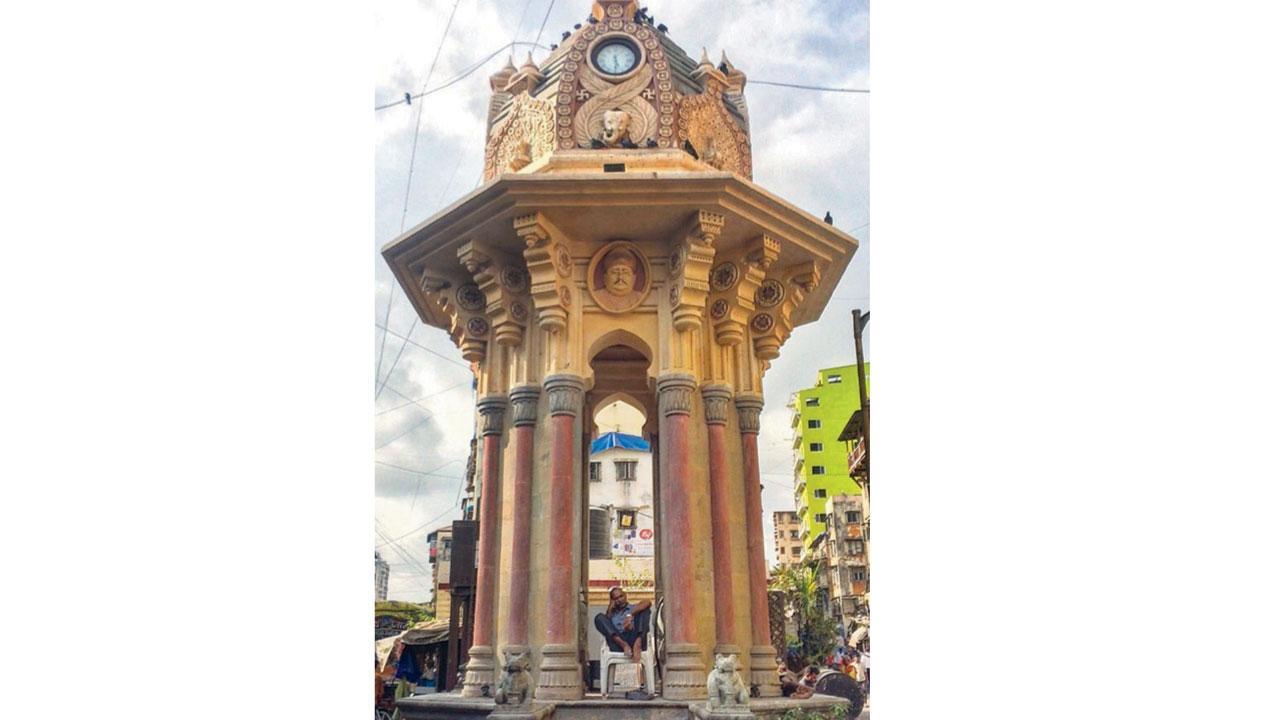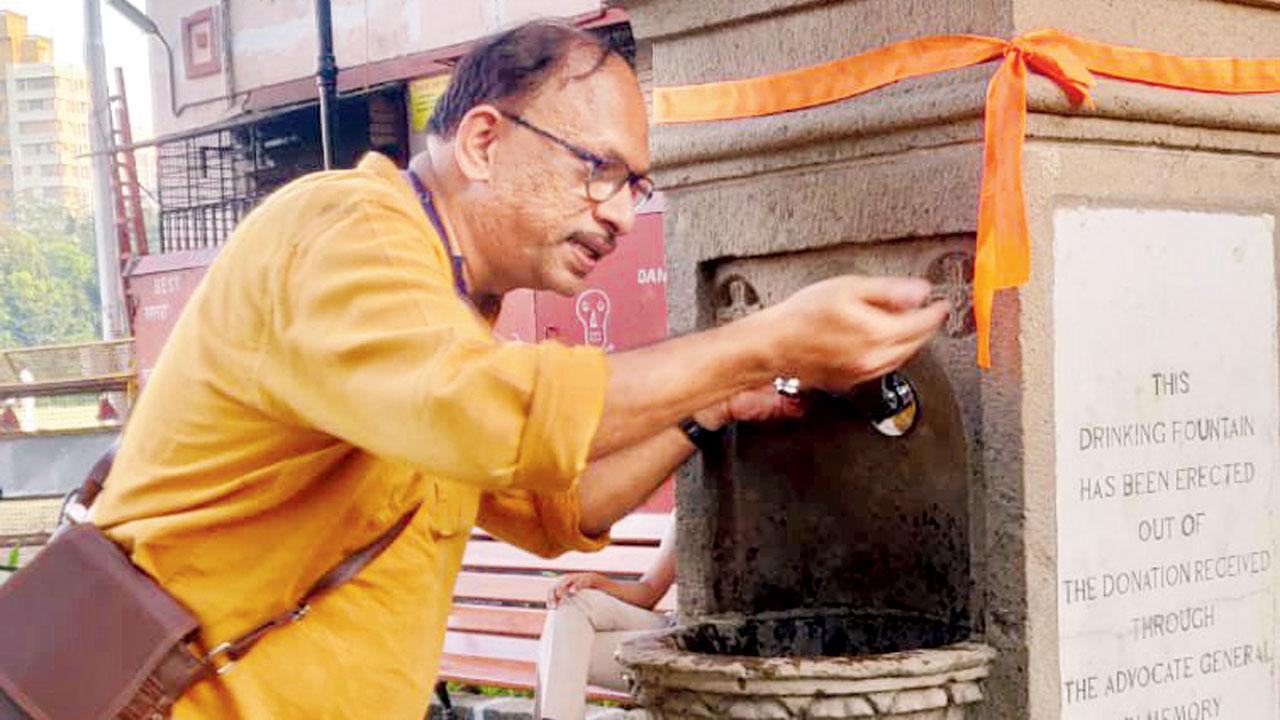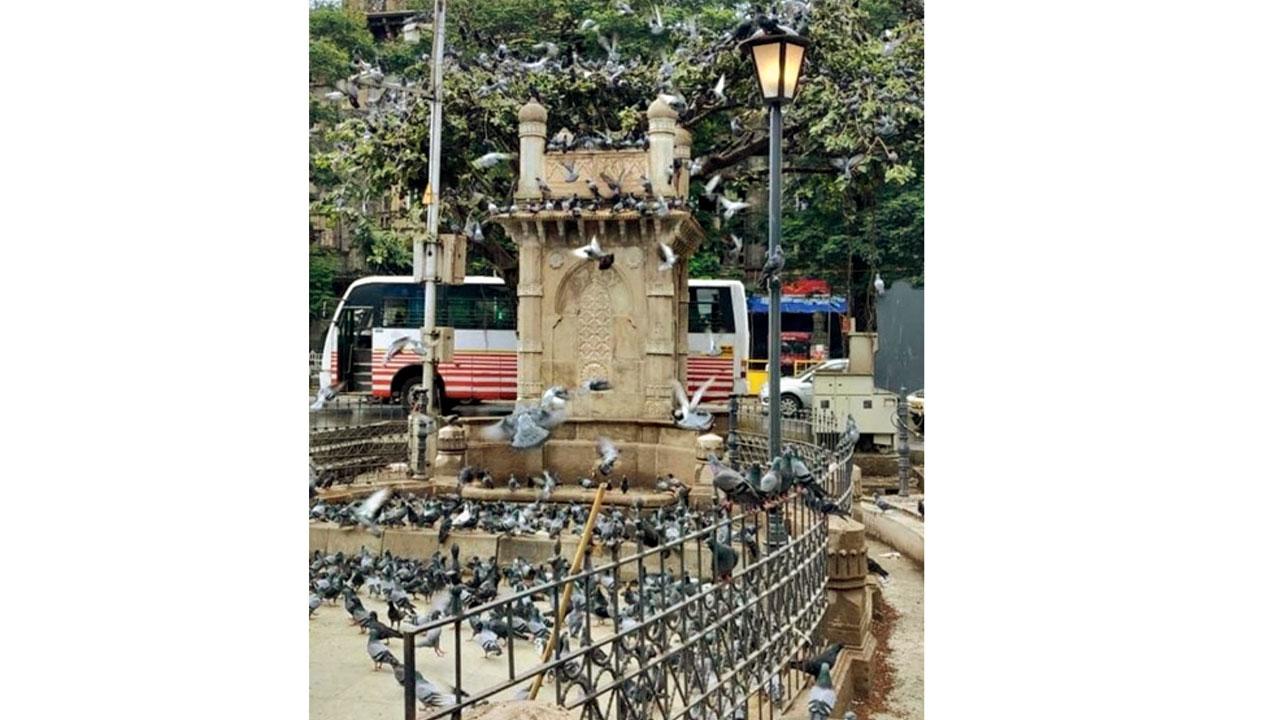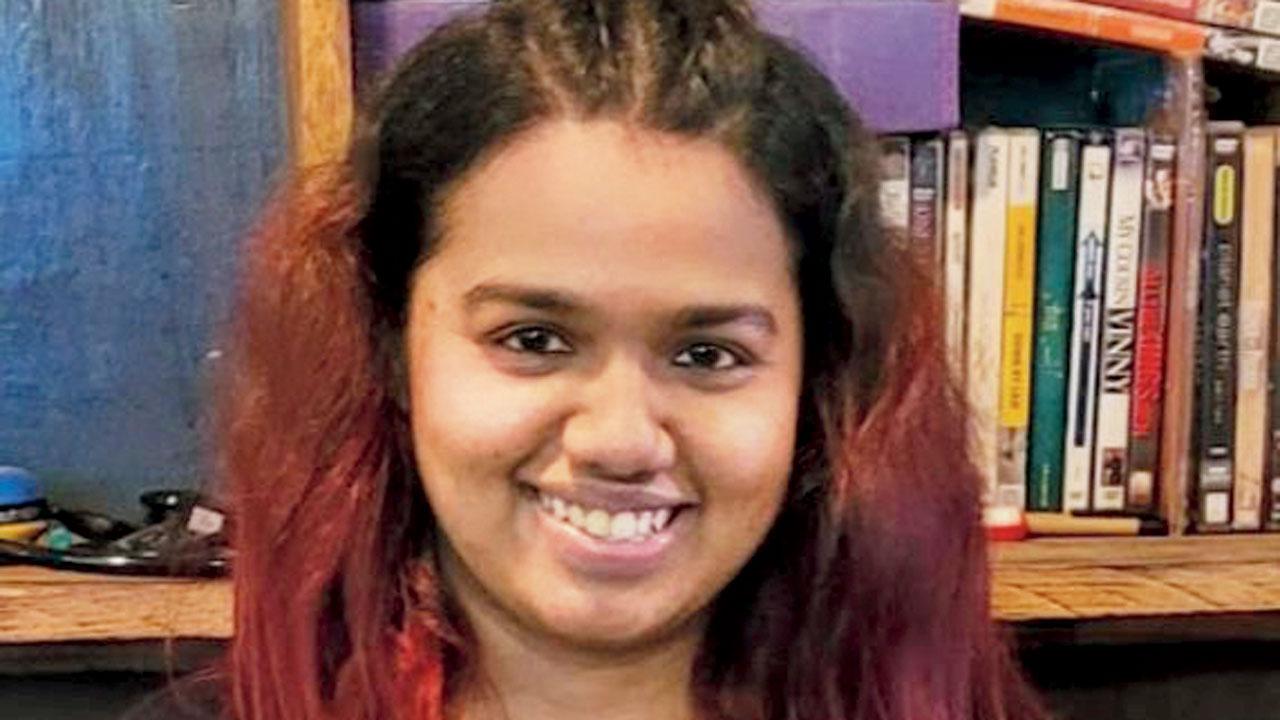This weekend, a guided walk traces Mumbai’s water heritage through drinking water fountains, and the socio-economic and cultural past associated with these landmarks

Kesowwji Naik fountain, Masjid Bunder. Pics Courtesy/Vaastu Vidhaan
Mumbai’s historic drinking water fountains or, as they’re colloquially known, pyaavs, installed approximately between the 1870s and 1950s, while being important structures in the city, tend to get overlooked. In this context, conservation architect Rahul Chemburkar tells us that there are around 50 pyaavs left in the city. Today, three are functional after restoration, namely Kesowwji Naik fountain at Masjid Bunder, built in the late 1870s, Ramji Setiba pyaav installed in the early 20th century at Shivaji Park, and Kothari pyaav built in 1923, near the General Post Office building at Fort. Six other pyaavs are currently under restoration, and will be opened to the public in the near future.
ADVERTISEMENT

Rahul Chemburkar at Ramji Setiba pyaav at Shivaji Park, Dadar
Path of pyaavs
On an upcoming heritage walk called Once Upon A Pyaav with Mumbai Pyaav Project, an initiative started by Chemburkar and his architecture firm Vaastu Vidhaan, the 49-year-old will guide the curious, halting at five to six of the city’s pyaavs. Starting at Masjid Bunder’s Kesowwji Naik fountain, the walk will trace a path of pyaavs till Horniman Circle at Fort. The trail will cover details of the fountains, such as their confluence of various architectural styles and stories behind the installation to bring to the forefront aspects of Mumbai’s socio-economic and cultural heritage. “Each pyaav has a tale to tell,” Chemburkar quips. Shruti Railkar of @passportandpizza who conducts heritage and food walks within the city, adds, “Mumbai’s water heritage is unique, yet not many know about it. Uncovering these facets of our cultural past is important.”

Devidas Prabhudas Kothari pyaav near CST
Pause spaces
If in need of some drinking water or rest while going about your day in the city, where would you go? Chemburkar notes that the most popular choice would be a café; even the mall or a restaurant today is the designated meeting point. Chemburkar, who likes to be known as a heritage enthusiast, highlights the lack of public spaces available in the city. He continues, “You want to have places where you can interact with people or rest. That’s one of the reasons why it’s important to restore and maintain the legacy of pyaavs, develop the space around them for people to use, find solace while they sit down, drink water and carry on with their day.” For Chemburkar, Mumbai’s yesteryear’s pyaavs are perfect spots for what he terms cultural pause spaces. A reduction in the purchase of plastic water bottles is a
notable benefit.

Shruti Railkar
Windows to the past
These structures offer a peek into the socio-economic ethos of the past. Chemburkar shares that we’ve been a city that was developed and built on trade and the influx of people from all over who came here to work. He continues that this furthered the need for facilities such as marketplaces, benches, and street lights —this included drinking water fountains as well.
Chemburkar adds, “In digging into the history of pyaavs and documenting them, an interesting fact that I would like to point out that makes me proud as a Mumbaikar, is that these pyaavs were installed for all communities.” They were donated in memory of a loved one or as an act of philanthropy catering to human beings and some to birds and animals, too. Today, the fountains are still called after the names mentioned on the plaques on the structures.
Restoring the pyaavs
He continues that while many pyaavs have been lost, demolished to make way for new structures or interestingly transformed for other uses, it’s important to document, restore and preserve the ones that are left. The architect adds that Mumbai has been at the forefront in taking initiatives to preserve and document cultural and heritage structures.
The functioning pyaavs offer filtered water to the passers-by. “It’s not sufficient to merely restore the structure; it’s important that we breathe life into them and ensure they’re functioning and maintained after restoration,” Chemburkar signs off.
On: June 25; 8.30 am
Log on to: DM @passportandpizza to register and for details
Cost: Rs 750
 Subscribe today by clicking the link and stay updated with the latest news!" Click here!
Subscribe today by clicking the link and stay updated with the latest news!" Click here!







